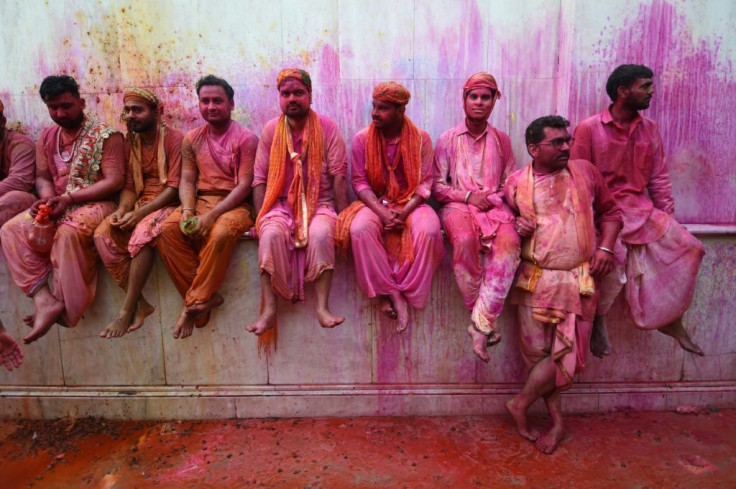Holi 2023: How The Festival Of Colors Is Celebrated; Wishes For Loved Ones

Holi is the most vivid and colorful Hindu festival in India. While it originated in India, it has gained massive popularity across the world with Holi events taking place in several parts of the United States, the United Kingdom and Canada, among other countries.
Holi also marks the beginning of spring after a long winter in India in a symbolic triumph of good over evil. Popularly known as the festival of colors, Holi is usually celebrated in the South Asian country in the month of March in view of the Hindu calendar month of Phalguna. This year, Holi will be celebrated on March 7- 8.
History Of The Holi Festival
While there are varying accounts of the origin of Holi in ancient Indian literature, a popular narrative suggests that an evil king, Hiranyakashyap, became really powerful and forced his subjects to worship him as their god. However, to his displeasure, his son Prahlada was a devotee of the Hindu deity, Lord Vishnu, and refused to worship him.
In angst, the king plotted a plan to kill his son with the help of his sister, Holika, who was immune to fire. She tricked Prahlada to sit with her in a pyre. When the bonfire was lit, Prahlada's devotion to Lord Vishnu helped him escape the fire unharmed, while Holika, was burned to death despite her immunity. It is believed that the festival of Holi derives its name from Holika.
How Is Holi Celebrated In India?
The festival is celebrated as a two-day event. On the eve of the festival of colors, devotees across several parts of India lit large pyres on fire to mark the burning of evil spirits. People often throw dried leaves, twigs, and wood into the bonfires as part of the celebration, also known as Holika Dahan.
On the second day of Holi, people of all ages gather on the streets or open areas to celebrate the festival by throwing water balloons and colored powder at each other. Streets across India turn red, green, blue and yellow on this day. It is believed that this tradition stemmed from Lord Krishna's inclination to throw colored water at people when he was a child.
Every color has a different meaning, according to Hindu mythology. While red stands for love and fertility, green symbolizes new beginnings.
On Holi, children can be seen using squirt guns and other toys to throw water at each other in merriment. Other ways to celebrate include filling colored water into balloons and throwing it at people from the rooftops. As these playful celebrations take place in the day, later in the evening, families get together to savor festive meals. It is a common practice to distribute sweets among family and friends during Holi.
Wishes For Near And Dear Ones
To celebrate the Hindu festival of Holi, here are some greetings and wishes one can send to their loved ones to honor the occasion: (courtesy - Financial Express and India TV News)
- "Burn all the negativity in life and bring only positivity. Wishing you and your family a very Happy Holi!"
- "May you get the strength to forget all ill-wills and embark on a new joyous journey with your dear ones. Happy Holi!"
- "Wash away your troubles with a splash of colors, it's time to greet happiness and smile the pain away, Happy Holi!"
- "Holika Dahan is the apt time to break the ice, renew relationships and link yourself with those that you wanted to with a bit of color. Happy Choti Holi!"
- "Bright colors, water balloons, tasty gujiyas, and melodious songs are the ingredients for a perfect Holi. Wish you and your family a very happy and colorful Choti Holi!"
- "Loads of fun, gujiyas, water balloons, colors, and bhang are what make Holi so special. Enjoy the festival of colors in the safest way possible. Happy Holi to you and your family."
Related Articles





















